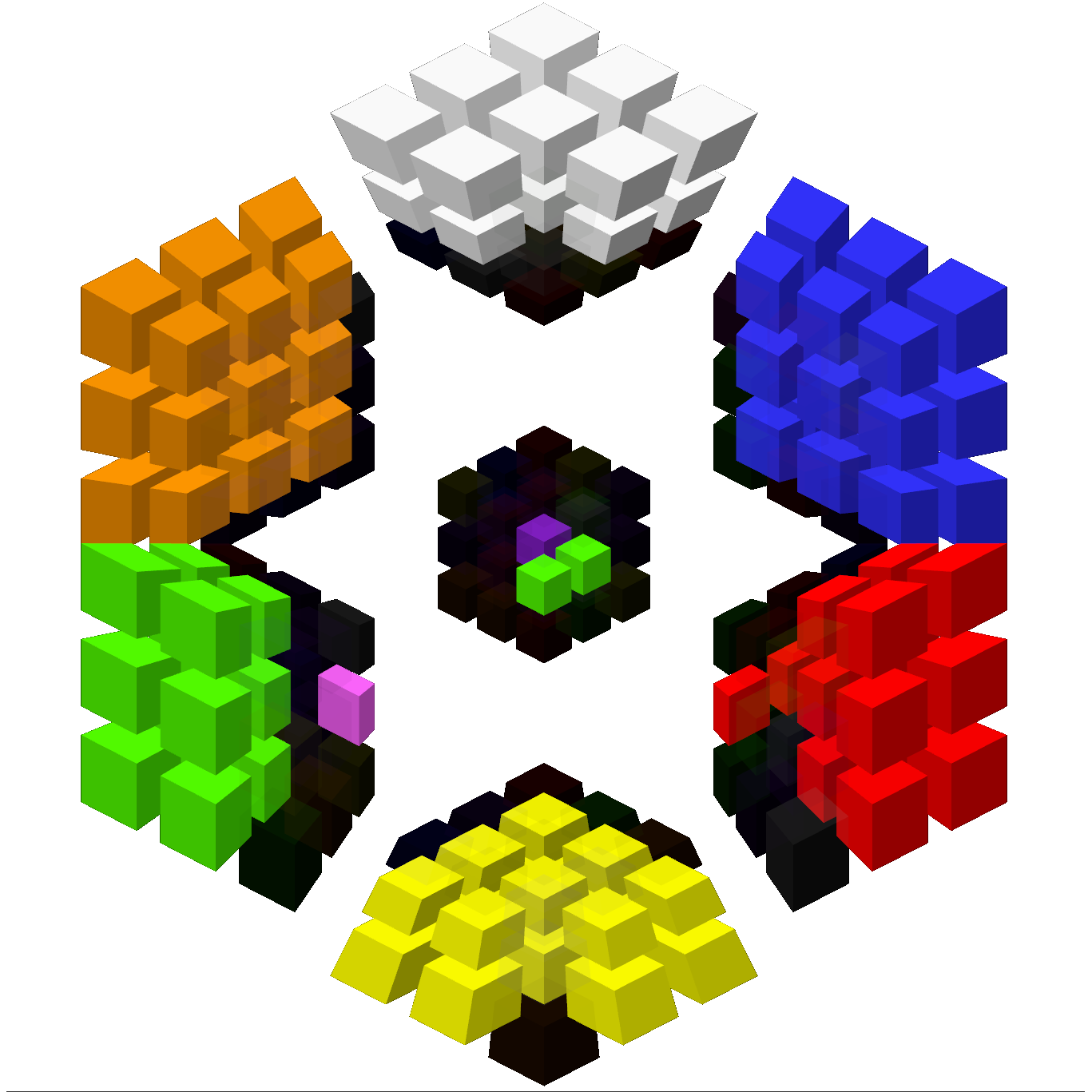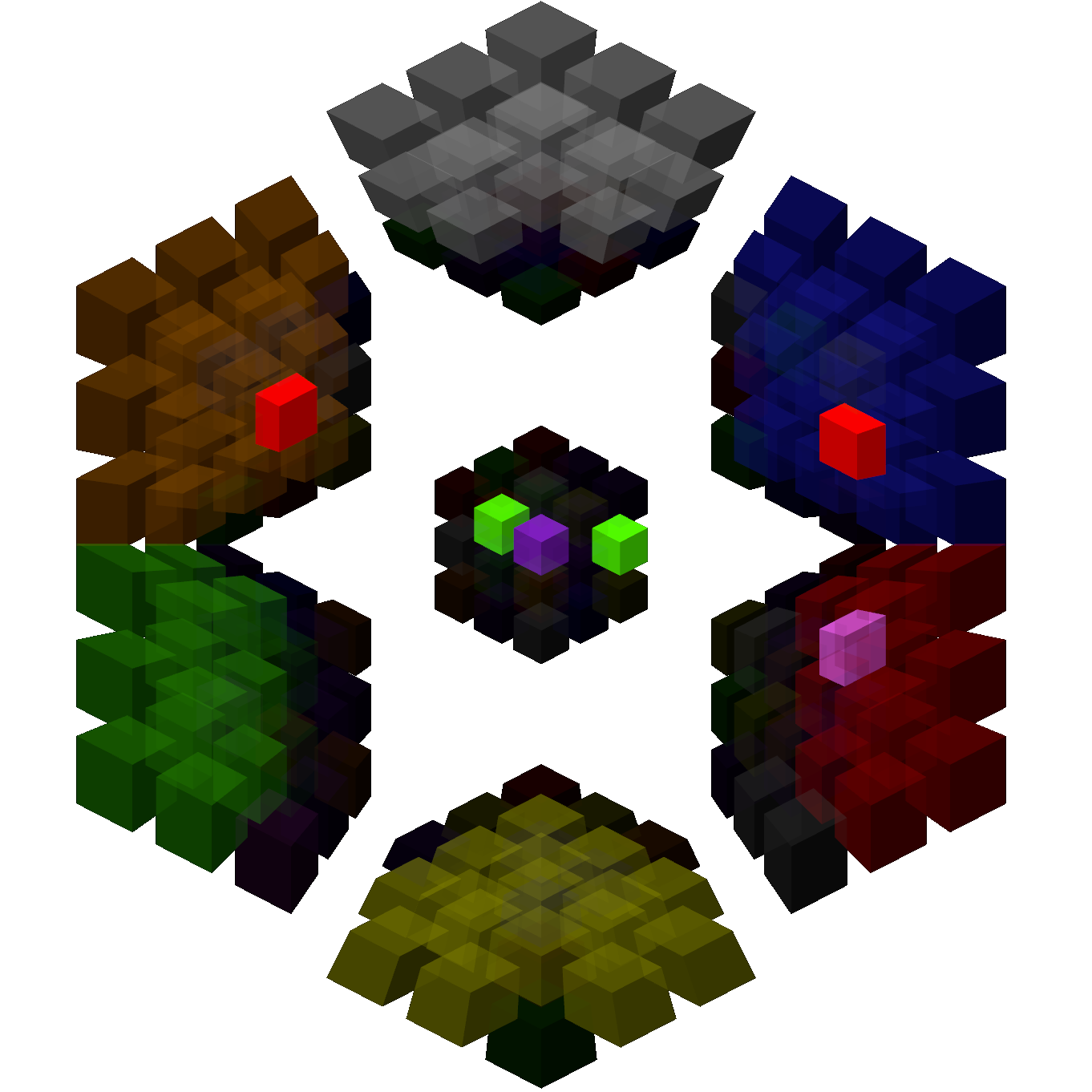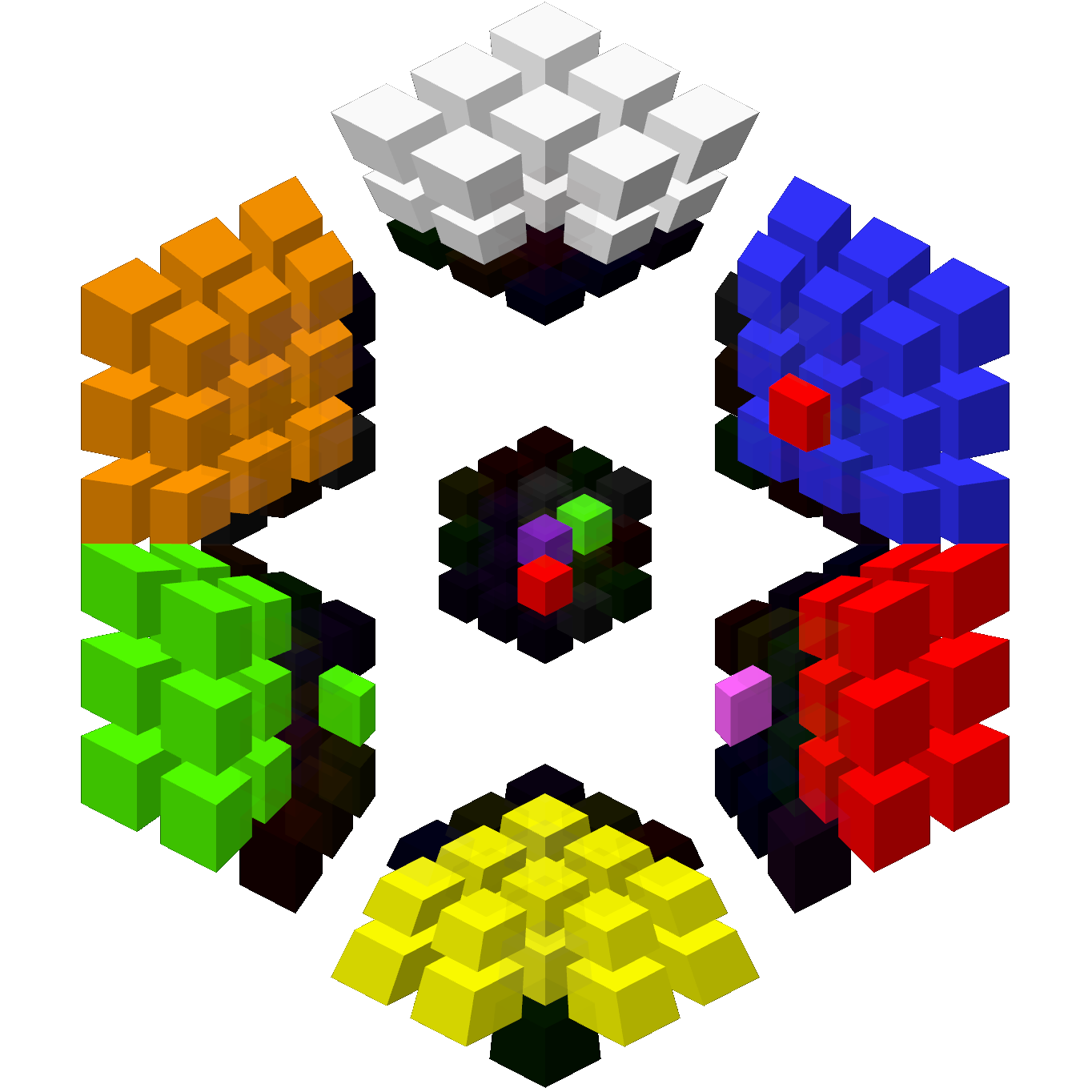F2L¶
First 2 Layers (F2L) is a solving technique for cubes and some other puzzles that involves pairing pieces and inserting those pairs into slots to build up the first 2 layers (of a 3-layered puzzle). The first known description of this technique was by John Conway in 1979, but is most commonly credited to Jessica Fridrich due to the massive popularity her website describing the CFOP method had in the early 1990s.
The goal of this page is to give you a generalized understanding of higher dimensional F2L, not to hand out algorithms for certain cases. There are so many cases for higher dimensional F2L that it would be nearly impossible to list out all the cases. It’s recommended to have a fairly strong intuitive understanding of 3D F2L before reading this page.
Dimensional Analogy
In 3D F2L, whenever you twist a side axis, a 1x1x3 block of pieces (containing the F2L slot) goes to the top layer (essentially a 1D line). In 4 dimensions, 2 adjacent sides intersect at a 2D plane. So when you do a twist you’re bringing a 1x1x3x3 block to the top layer, which contains 3 F2L pairs: that being two F2L-b slots and an F2L-a slot. This makes inserting a single pair trickier, because now you need to use more moves to not disturb the other two subslots.
Continuing this analogy into 5D, you bring a whole 3D cube’s worth of F2L slots to the top (1x1x3x3x3) that you mustn’t disturb while inserting a single pair. This pattern continues for higher and higher dimensions, meaning that it gets trickier to insert a single pair. Pro solvers of higher dimensional puzzles will wait until they have 3 (or multiples of 3) pairs, then pairs all those pairs into a gigapair, and then insert that gigapair like inserting a lower dimensional pair.
Terminology
To talk about F2L in a dimensionally neutral way, we need some more terms. Most importantly, the following:
- Head: the piece in the pair with the most colours (corner in 3D)
- Body: the piece in the pair with one less colour (edge in 3D)
For more terms, see the glossary.
Regardless of dimension and type of pair, they are broken down into the following categories:
- both in top, head facing side axes
- both in top, head facing top axis
- body in slot, head in top facing side axis
- body in slot, head in top facing top axis
- head in slot facing side axis, body in top
- head in slot facing base axis, body in top
- both stuck in slot
F2L-4a¶
F2L-a pairs consist of a 2c and a 3c, exactly the same as in 3D. The solutions feel very similar to 3D cases, but there are a few extra tricks that are possible.
Hide and reveal
Notice: same color on top.
Can either use RKT on the I cell to pair it or use hide and reveal (preferred).
RU IU RU' //pair
IU2 RU IU' RU' //insert



